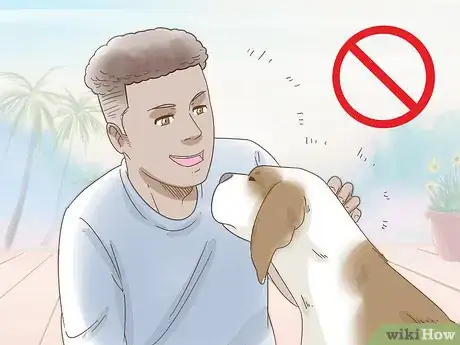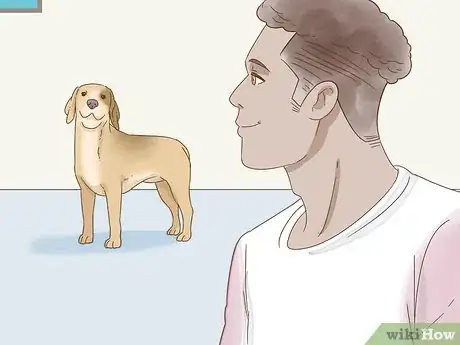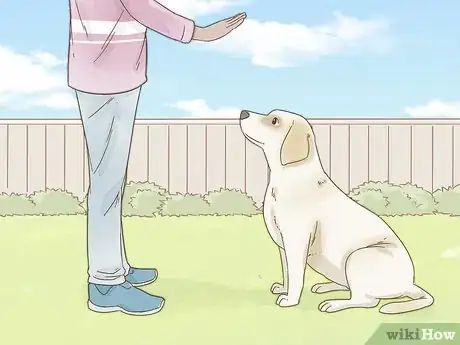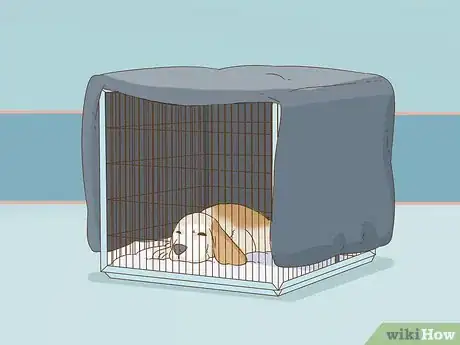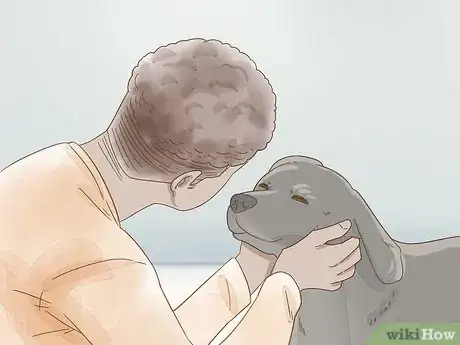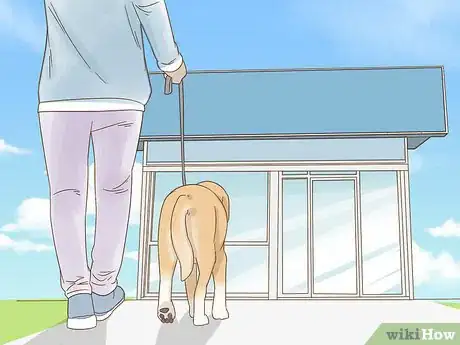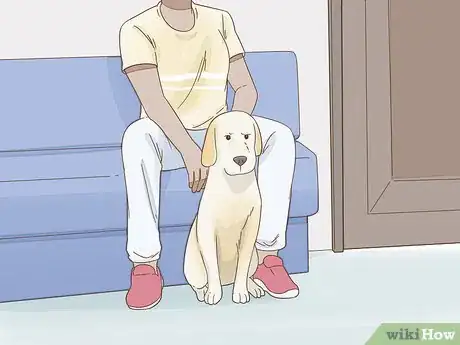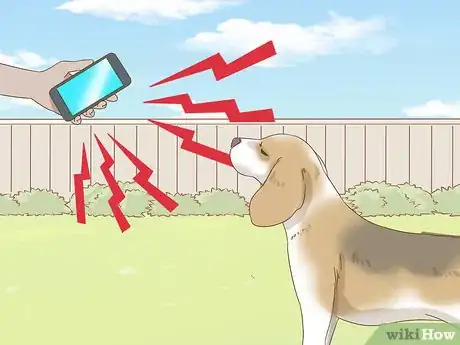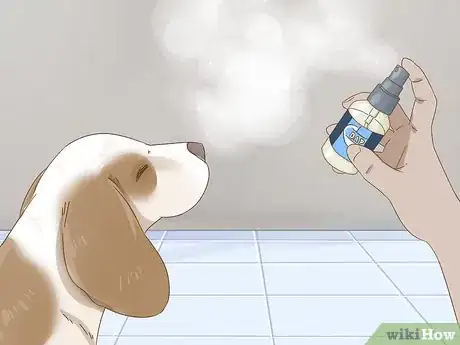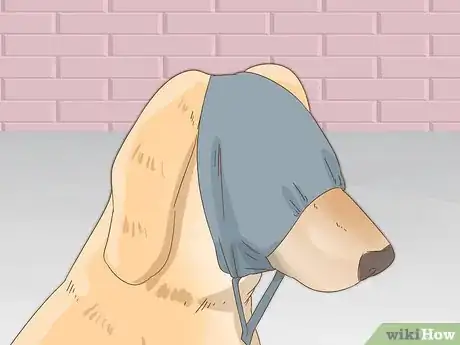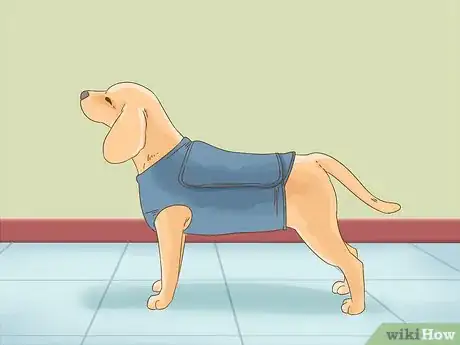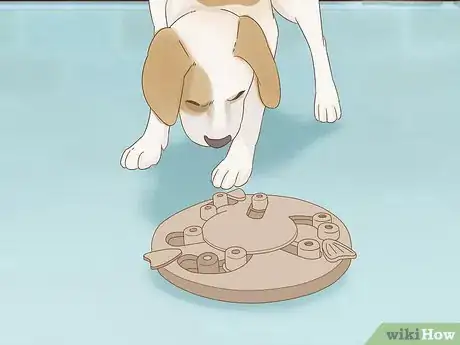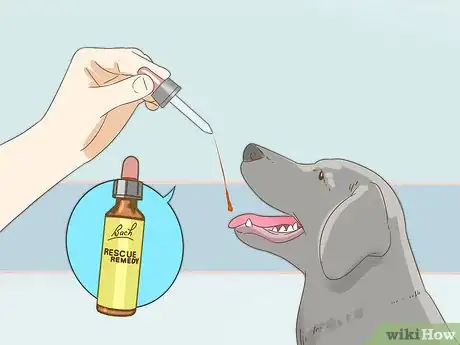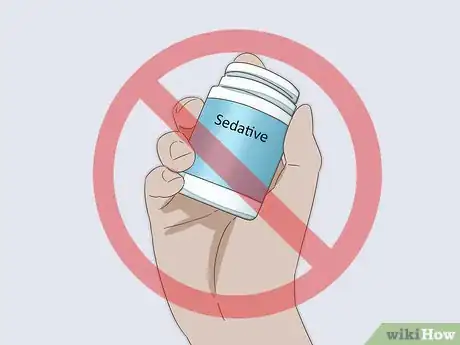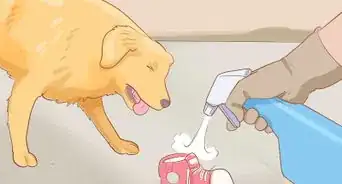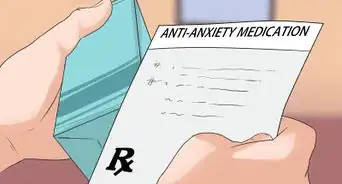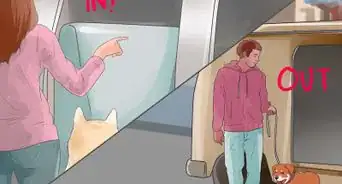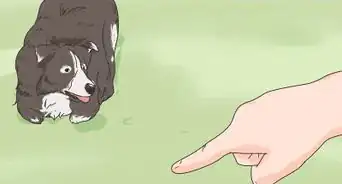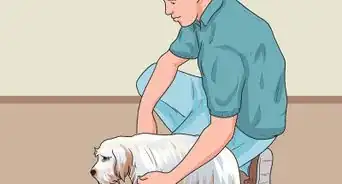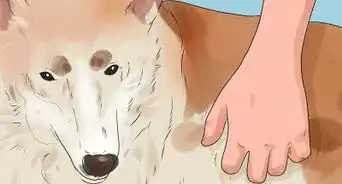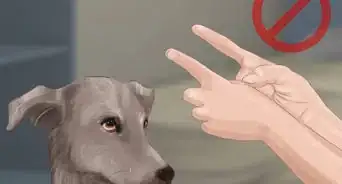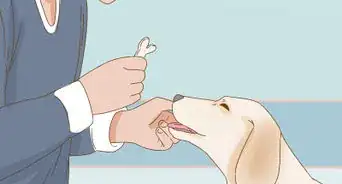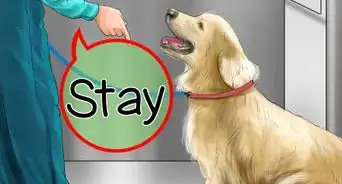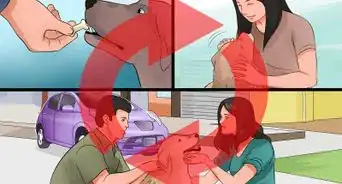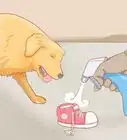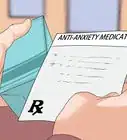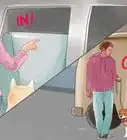This article was co-authored by Star of Texas Veterinary Hospital. Star of Texas Veterinary Hospital is a team of four veterinarians based in Austin, Texas. Star of Texas Veterinary Hospital offers medical assessments, dentistry, ultrasonography, flea control, radiology, and cardiology services to dogs, cats, and pocket pets. Star of Texas Veterinary Hospital is Austin’s first Fear Free Certified Practice and was awarded "1st Runner Up in Culture" by the 2020 Best of the Best Austin Official Choice Awards. They were a Best of the Best winner in Austin's Official Community Choice Awards. Star of Texas Veterinary Hospital's veterinarians are members of the American Association of Feline Practitioners, the Texas Veterinary Medical Association, and the American Veterinary Medical Association.
There are 12 references cited in this article, which can be found at the bottom of the page.
wikiHow marks an article as reader-approved once it receives enough positive feedback. In this case, several readers have written to tell us that this article was helpful to them, earning it our reader-approved status.
This article has been viewed 123,777 times.
Regardless of breed or age, dogs can become anxious in response to intimidating situations. Though they all express anxiety differently, anxiety can lead to destructive, harmful behavior if you don't address it. If your dog is anxious, he may pant, drool, bark excessively, or hide under furniture. Fortunately, there are several things you can do to respond to your dog's anxiety, including desensitizing your dog and using alternative therapies.
Steps
Responding to Your Dog's Anxiety
-
1Avoid reinforcing your dog's anxiety. It's natural to want to comfort your dog, stroke his head, and speak soothingly to him. You may even be worried if you're both dealing with a stressful event, like an operation at the vet's. Unfortunately, your dog can pick up on your anxiety, making him feel like the situation is out of control, amplifying his anxiety.[1]
- Don't give your dog treats or respond with hugging or petting. These reward your dog's anxious behavior, which means that he learns to repeat it.
-
2Act as normally as possible. Since your dog will be paying close attention to how you respond to stressful situations, signal to him that everything is fine. If you act as if nothing has changed, your dog will have no cause for alarm. If your dog is showing signs of anxiety, like trembling, shaking, or whining, then ignore his behavior.[2]
- Speak to your dog in a firm but kind voice telling him not to be silly. He'll recognize the disapproval in your tone of voice and understand that you aren't concerned so neither should he be.
Advertisement -
3Show your dog you're still in control. Your dog may be feeling out of control and fearful. Focus his attention on you and distract him by doing a simple training session, even if it's in the vet's waiting room. Do simple training commands like "Sit", "Down", or "Stay." This tells him you are in control, you are not worried, and that everything is normal.
- With his attention elsewhere, the hormones that make him feel anxious subside so he'll relax.
- Practicing these commands when your dog is anxious can also help you deal with any separation anxiety your dog might have.[3]
-
4Offer a safe haven or crate. Create a place that your dog associates with safety and can retreat to.[4] Plan ahead and train your dog to accept a crate as a safe place.[5] At times of exceptional anxiety, cover part of the crate with a blanket to make it even more den-like. Being in a calming environment will stabilize his anxiety levels.
- Casually place toys in your dog's crate but continue to act normally and avoid eye contact. This way, you won't be reinforcing any fearful behavior.
-
5Try to understand your dog's anxiety. Your dog is anxious because his body produces hormones, like cortisol and adrenaline, in fearful or stressful situations. These prepare his body to fight or flee and create actual physical changes in the heart (making it pump harder), the muscles (supplies them with extra blood), and the lungs (take in more oxygen). These changes mean your dog can become anxious out of habit, so that whenever your dog gets cues that he should be anxious, hormones are released causing the anxiety episode.
- For example, if your dog sees you reacting to his fear, then his body releases chemicals and hormones to respond to the anxiety. That is why it's important to watch how you react to your dog's anxiety.[6]
Desensitizing Your Dog
-
1Expose your dog to a small stressful situation. Desensitize, or expose your dog to an ultra-low level of the fearful situation.[7] Do this to show him that nothing bad happens. For example, if your dog is afraid of the vet, walk your dog past the vet's office and get him used to sitting by the entrance. Reward good behavior with a treat and lots of attention before continuing on a fun walk. This way, your dog has positive associations with a previously stressful place.[8]
- You'll need to take this slowly, gradually exposing him from weeks to months and increasing the level of the threat.
-
2Move on to a more fearful situation. Once your dog becomes comfortable with a low-level situation, move on to a more stressful situation. For example, take your dog into the waiting room of the vet. If he goes in comfortably, reward him with treats. Do this a few times before adding a new step to the routine. You might take your dog in and sit down for a while. Again, reward calm behavior. You can start extending the period of time you spend there to make your dog more comfortable.[9]
- These small visits will expose your dog to what he fears. Eventually, he'll build positive associations with going into the vet's.
-
3Directly expose your dog to his fear. Some dogs might be more fearful of sounds or surprises. In these cases, have your dog face his fears. For example, if your dog is afraid of fireworks, play a recording of firework noise very quietly and reward your dog for good behavior. Gradually increase the volume over a length of time. If your dog seems distressed, go back a few levels and start again.[10]
- The same principle can be applied to pretty much anything. If your dog is afraid of other dogs, have a plastic dog set in the distance and reward your dog's calm behavior. Or, if your dog is afraid of riding in the car, start by feeding him in the stationary car. Create positive associations.
Using Therapies to Treat Anxiety
-
1Consider using pheromones. You can buy dog appeasing pheromones (DAP, also known as Adaptil), synthetic versions of the pheromones that mother dogs release when nursing their puppies. The DAP can be diffused or sprayed in your home, car, or outside. DAP are thought to make your dog feel safer, reassured, relaxed, and contented, which can reduce anxiety levels.[11]
- Keep in mind that your dog will need to be exposed to the pheromones for around 2 weeks before feeling the effects. Because of this, you may want to use a DAP or Adaptil collar so your dog is continually exposed.
-
2Put blinders on your dog's eyes. Use face blinder caps (similar to horse blinders) to gently cover his eyes. These can reduce anxiety by decreasing visual stimulation and only allowing your dog to see shapes, but not details. These work best for dogs that are fearful of flashes and bright lights, such as thunderstorms or fireworks. Test the blinder caps out before a stressful situation to make sure your dog accepts them and is comfortable, before adding them into the equation of a stressful situation.[12]
- If your dog paws frantically at the cap, stands with his head down looking dejected, or shakes then it is best to remove the cap. Blinder caps can actually increase feelings of anxiety for some dogs, because they feel trapped.
-
3Try a calming garment. You can buy or make shirts you wrap around your dog, putting pressure on the body to calm the dog. A shirt like this can help a dog with separation anxiety, fear of loud noises, and barking out of fear, travel anxiety, crate training, hyperactivity, and leash pulling.
-
4Provide puzzle toys. Puzzle toys can distract your dog from its anxiety. Some have a hole in the top that you can put treats in. Be sure to provide the toy before your dog becomes anxious so it isn't seen as a reward for anxious behavior.
- You could put peanut butter in the toy and freeze it overnight.
-
5Try alternative therapies. There are several options for non-prescription medications which you can get from the pharmacy or your vet's office. These include:
- Bach Flower remedies: Place herbal drops containing the Bach Flowers (chicory, heather, red chestnut, and honeysuckle) on your dog's tongue at times of high anxiety. The remedy is said to have a calming effect but this is not proven, and very much a case of "try it and see". Some owners swear by its effectiveness, while others report no change.[13]
- Skullcap and Valerian: These herbal remedies are said to have a calming effect and the ability to reduce anxiety and excitability.[14] Follow the package instructions for dosing information, but be sure to give it before your dog becomes anxious. Once your dog is already aroused any potential benefit is lost.
- Zylkene: Scientific studies believe this food supplement can help animals deal with stress. The active ingredient is a refined protein found in milk that acts on receptors in the brain. Give zylkene before a stressful situation, or in the long term, since there are no negative side effects. This makes it ideal for situations such as going into a boarding kennel where the stress could be prolonged.[15]
-
6Avoid using sedatives. While sedatives might seem like a good idea if your dog is extremely anxious or sensitive, there are several harmful associations. Keep in mind:[16]
- Sedatives are often addictive and so your dog may become hooked on the medication.
- The effect tends to diminish over time so, you'd need to increase the dose of the potentially addictive medications.
- For the short term, sedatives are supposed to make the dog too sleepy to show outward signs of anxiety. But, his heart may still be pounding away and he has the internal physiological signs of anxiety. He just can't show them.
- The brain has a reduced ability to learn new behaviors. This means that any progress made through retraining is often painfully slow and forgotten altogether when the medication stops.
- Some sedatives cause disorientation and can actually amplify the distress your dog feels when he's anxious.
Expert Q&A
-
QuestionHow much Benadryl can you give a dog for anxiety?
 Pippa Elliott, MRCVSDr. Elliott, BVMS, MRCVS is a veterinarian with over 30 years of experience in veterinary surgery and companion animal practice. She graduated from the University of Glasgow in 1987 with a degree in veterinary medicine and surgery. She has worked at the same animal clinic in her hometown for over 20 years.
Pippa Elliott, MRCVSDr. Elliott, BVMS, MRCVS is a veterinarian with over 30 years of experience in veterinary surgery and companion animal practice. She graduated from the University of Glasgow in 1987 with a degree in veterinary medicine and surgery. She has worked at the same animal clinic in her hometown for over 20 years.
Veterinarian A rule of thumb is 1 mg of Benadryl for each 1 lb body weight. However, it's also fine to go by bands, so a small dog below 30 lb gets 10 mg, 30-50 lb gets 25 mg, and 50+ lb gets 50 mg. Always check with your vet first to make sure it's safe to dose your dog with any new medication.
A rule of thumb is 1 mg of Benadryl for each 1 lb body weight. However, it's also fine to go by bands, so a small dog below 30 lb gets 10 mg, 30-50 lb gets 25 mg, and 50+ lb gets 50 mg. Always check with your vet first to make sure it's safe to dose your dog with any new medication. -
QuestionHow do you calm down a dog when it's scared?
 Pippa Elliott, MRCVSDr. Elliott, BVMS, MRCVS is a veterinarian with over 30 years of experience in veterinary surgery and companion animal practice. She graduated from the University of Glasgow in 1987 with a degree in veterinary medicine and surgery. She has worked at the same animal clinic in her hometown for over 20 years.
Pippa Elliott, MRCVSDr. Elliott, BVMS, MRCVS is a veterinarian with over 30 years of experience in veterinary surgery and companion animal practice. She graduated from the University of Glasgow in 1987 with a degree in veterinary medicine and surgery. She has worked at the same animal clinic in her hometown for over 20 years.
Veterinarian Avoid comforting the dog, as this sends out a message that they're right to be anxious. Instead, distract them with some obedience training or a favorite toy. If all else fails, give the dog a place to hide but make sure you act normal as this reassures the dog.
Avoid comforting the dog, as this sends out a message that they're right to be anxious. Instead, distract them with some obedience training or a favorite toy. If all else fails, give the dog a place to hide but make sure you act normal as this reassures the dog. -
QuestionHow can you help a dog with separation anxiety?
 Pippa Elliott, MRCVSDr. Elliott, BVMS, MRCVS is a veterinarian with over 30 years of experience in veterinary surgery and companion animal practice. She graduated from the University of Glasgow in 1987 with a degree in veterinary medicine and surgery. She has worked at the same animal clinic in her hometown for over 20 years.
Pippa Elliott, MRCVSDr. Elliott, BVMS, MRCVS is a veterinarian with over 30 years of experience in veterinary surgery and companion animal practice. She graduated from the University of Glasgow in 1987 with a degree in veterinary medicine and surgery. She has worked at the same animal clinic in her hometown for over 20 years.
Veterinarian The trick is to reduce the clues that you are about to leave, which ramp up anxiety before you leave. Vary your leaving routine to make it less obvious you are about to leave, which helps keep the dog calmer. Sadly, the help of a certified behaviorist is often necessary for severely affected dogs.
The trick is to reduce the clues that you are about to leave, which ramp up anxiety before you leave. Vary your leaving routine to make it less obvious you are about to leave, which helps keep the dog calmer. Sadly, the help of a certified behaviorist is often necessary for severely affected dogs.
Warnings
- Never punish your dog when anxious behavior is displayed. Doing so will only make your dog fearful of you and make the situation worse. Your dog will relate anxious, fearful feelings with your presence.⧼thumbs_response⧽
- Make sure you never yell at your dog. This does bad things for all dogs, but it's even worse for dogs that are already anxious. It is fine to talk firmly to your dog, however.⧼thumbs_response⧽
References
- ↑ https://www.cesarsway.com/dog-behavior/hyperactivity-overexcitement/5-tips-for-calming-a-hyperactive-dog
- ↑ https://www.cesarsway.com/dog-behavior/hyperactivity-overexcitement/5-tips-for-calming-a-hyperactive-dog
- ↑ https://www.mspca.org/pet_resources/dealing-with-separation-anxiety-in-dogs/
- ↑ Star of Texas Veterinary Hospital. Veterinarians.
- ↑ http://www.doggonesafe.com/signs_of_anxiety
- ↑ Small Animal Internal Medicine. Nelson & Couto. Publisher: Mosby.
- ↑ Star of Texas Veterinary Hospital. Veterinarians.
- ↑ http://www.training-your-dog-and-you.com/Desensitizing_and_counter-conditioning.html
- ↑ http://www.training-your-dog-and-you.com/Desensitizing_and_counter-conditioning.html
- ↑ http://www.training-your-dog-and-you.com/Desensitizing_and_counter-conditioning.html
- ↑ http://pets.webmd.com/features/pet-pheromone-products-for-behavior-problems
- ↑ http://sonomahumane.org/New/wp-content/uploads/2014/04/Anxious-dogs.pdf
- ↑ http://www.dogsnaturallymagazine.com/bach-flower-essences-for-your-dogs-separation-anxiety/
- ↑ http://www.natural-dog-health-remedies.com/dog-anxiety.html
- ↑ http://www.zylkenepet.co.uk/
- ↑ http://www.puppyleaks.com/sedative-for-fearful-dogs/
About This Article
To reduce anxiety in your dog, act as normal as possible and tell it in a firm, but kind voice to stop being silly to signal that everything is fine. Then, distract your dog by having a simple training session with basic commands like “Sit” and “Stay.” Alternatively, let your dog spend some time in its crate while continuing to act normal to avoid reinforcing any fearful behavior. If your dog continues to remain anxious despite your efforts, talk to your vet about alternative therapies such as herbal remedies and food supplements. For information from our Veterinary reviewer on how to desensitize your dog to reduce its anxiety, read on!
